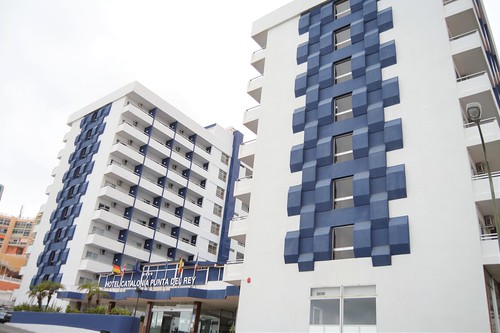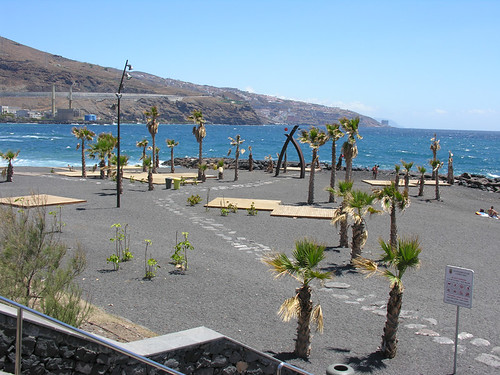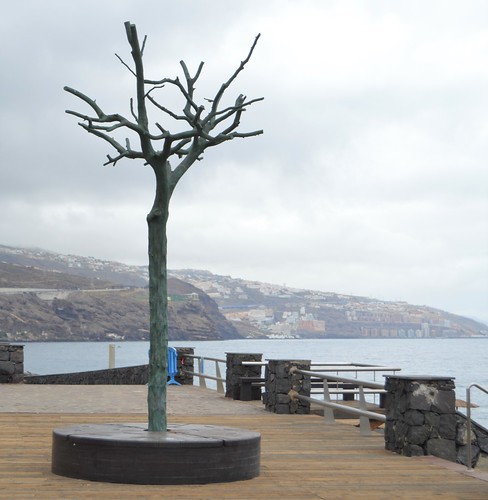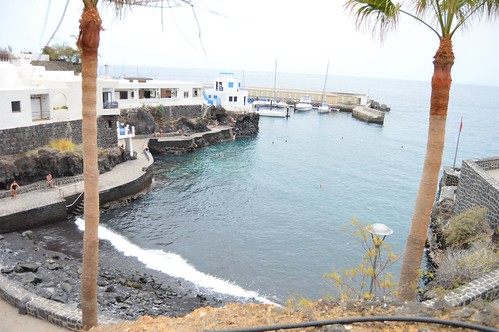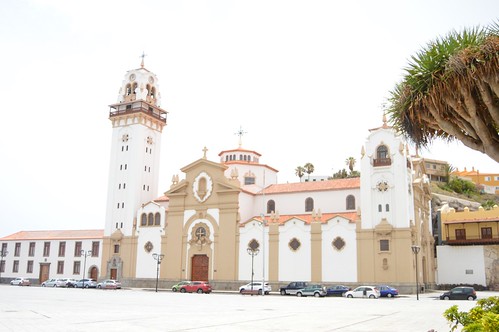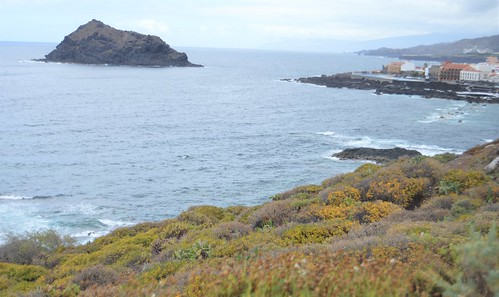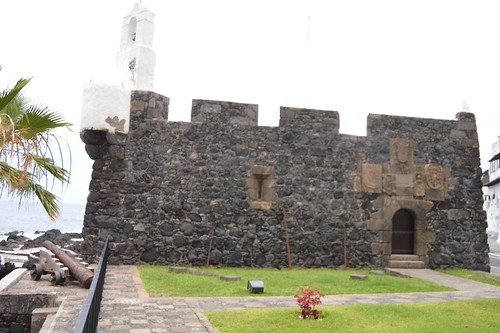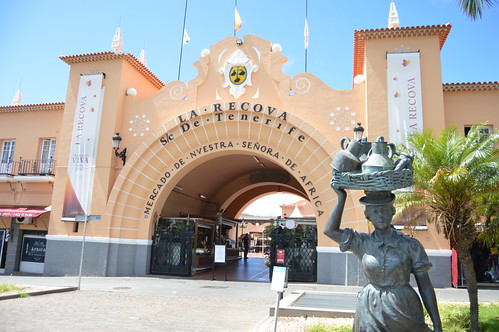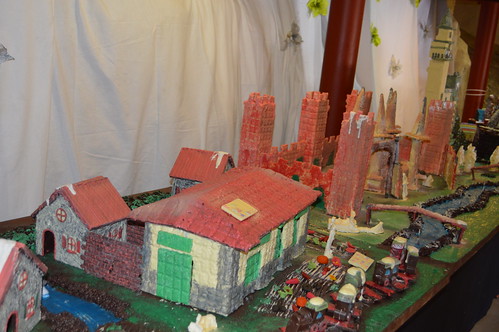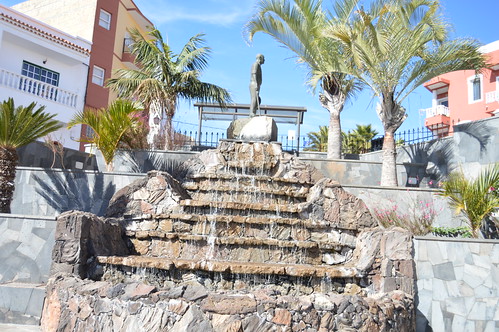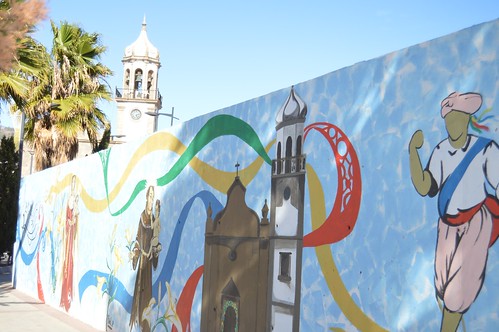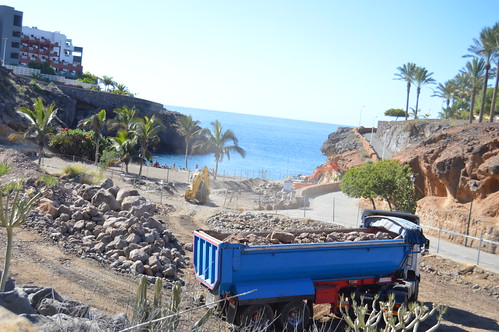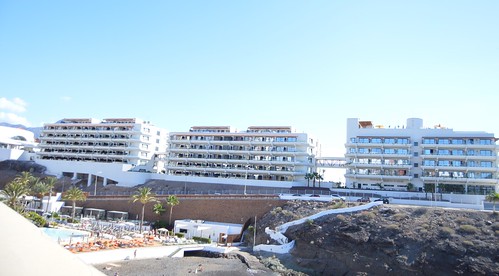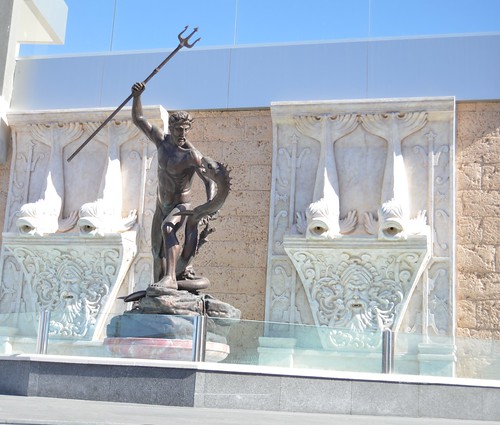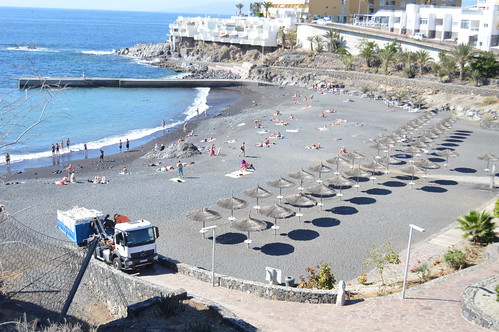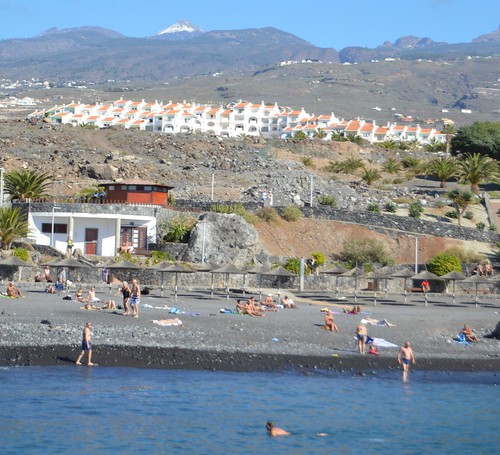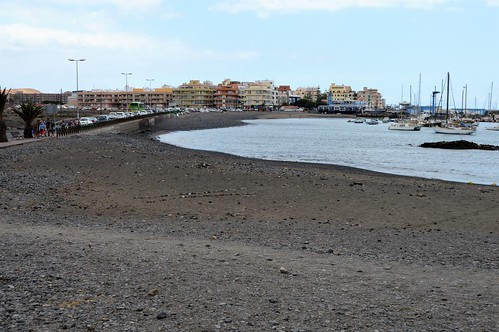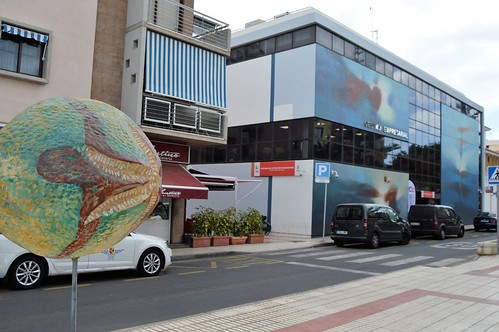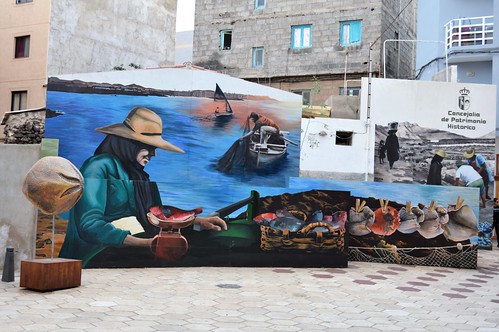
From La Paz mirador I could see a scattering of bathers relaxing to the slow crunching drag of pebbles at Playa Martianez. All around the coast of Puerto de la Cruz people were easing into the sea fom every launch point. Lago Martianez bucked that trend, the spray of the big fountain, the only active part as the large swimming complex awaited its re-opening on 26 June.
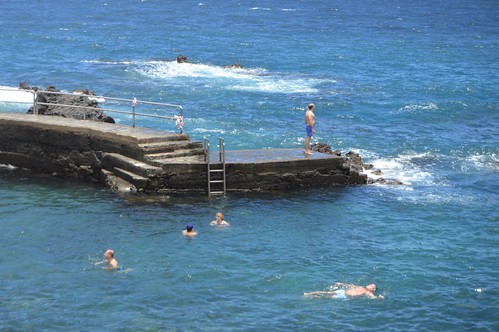


The statue of two old time tourists at La Paz was a reminder that the north of Tenerife was a magnet for tourists long before the first package tours hit Playa de Las Americas. The town of Puerto de la Cruz was its usual alluring mix of sprawling shadey plazas, tight streets loaded with cosy cafes and bars, and artistic flair taking a bow where least expected.
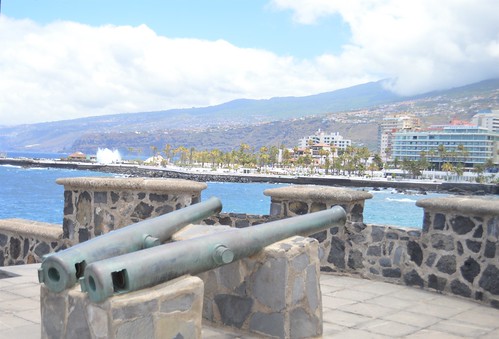

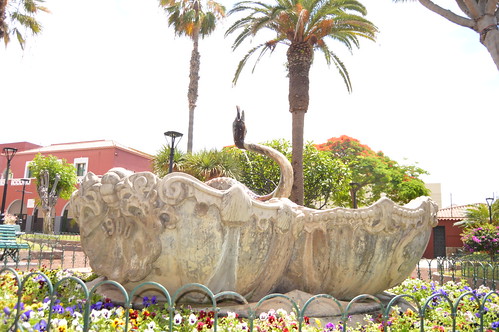
The core of Puerto de la Cruz was quiet, chomping at the bit for the return of tourism in the post Coronavirus normality. In historical terms, Puerto was taking a moment to adjust and move on. The canon strewn battlements above Plaza de Europa spoke of stability, and the compact fishing port beyond championed pride in tradition. Further on the vast sweep of Playa Jardin would have been preparing stacked bonfires to mark the Night of San Juan, a symbol of rebirth and renewal. The loss of one fiesta will be compensated by street entertainment featuring clowns, art, and music during the coming year.


If your into street art, you´ll find some fine examples diverting your gaze as you browse the intersecting streets that seem to always funnel you back to he sea. Some urban redevelopment plans have dragged their feet, so it was good to catch up with the new neat and compact bus station next to the site of the rickety old dungeaon. I have to admit I liked the way the old home used to shudder as buses plunged down the entrance ramp. Down by Playa Jardin, the outdoor swimming pool has been empty and covered in graffiti since 2015, but a new 11.8 million euro plan has just been published for a replacement with a 2022 completion.


Agatha Christie, a famous past visitor to Puerto, was a mistress of twists and turns but even she could not have forseen the trials and tribulations that would hit the world in 2020. Puerto de la Cruz is a surviver and always offers new delights for returning visitors. A new chapter is about to begin.


